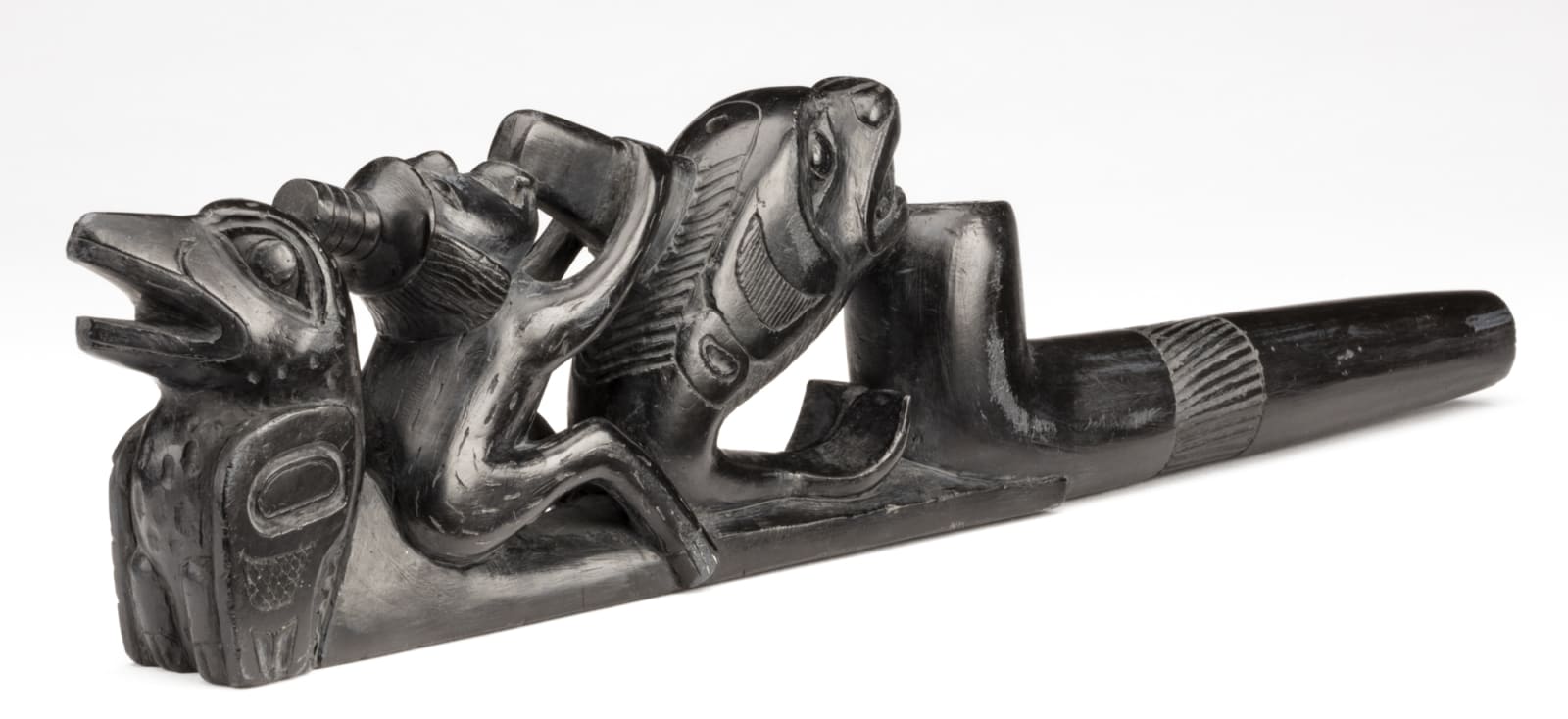-
Artworks
UNIDENTIFIED ARTIST, HAIDA
Late Trade Pipe, c. early 1880sargillite, 3 x 13 x 1.25 in (7.6 x 33 x 3.2 cm)
unsigned.
LOT 75
ESTIMATE: $4,000 — $6,000
PRICE REALIZED: $3,360.00Further images
The Haida “trade pipe” tradition began around 1850, lasting until the end of the 19th century. Early examples were based on simple European clay pipes (a bowl with a long,...The Haida “trade pipe” tradition began around 1850, lasting until the end of the 19th century. Early examples were based on simple European clay pipes (a bowl with a long, narrow stem), but with added figural embellishments, many of which resembled contemporaneous ship panel pipe imagery. Later trade pipes (beginning around 1880) exhibited Haida imagery almost exclusively, except for the frequent continuation of European faces on the bowls.
This pipe is a particularly well-carved example of the late trade pipe style, and is unusual as well. The imagery is fairly typical for the period: a Raven, and a Bear-Human wearing a ringed hat (the Mother Bear myth was a common subject in late 19th century argillite art), licking the dorsal fin of a Killer Whale. The configuration of the pipe is quite rare however. Trade pipe bowls are almost always found at the far end of the pipe (usually carved as heads or animal figures) or sometimes in second-last position along the length of the pipe. Here the pipe is essentially a stand-alone element.
References: See the chapter on late trade pipes in Peter L. Macnair and Alan J. Hoover, The Magic Leaves: A History of Haida Argillite Carving (Victoria: Royal BC Museum, 1984/2002), pp. 119-126; a pipe with a similar configuration of pipe bowl to figures is illustrated in fig. 181. See also Leslie Drew and Douglas Wilson, Argillite: Art of the Haida (Vancouver: Hancock House, 1980), pp.164-165.
Provenance
A British Columbia Collection.
Join our mailing list
* denotes required fields
We will process the personal data you have supplied in accordance with our privacy policy (available on request). You can unsubscribe or change your preferences at any time by clicking the link in our emails.








